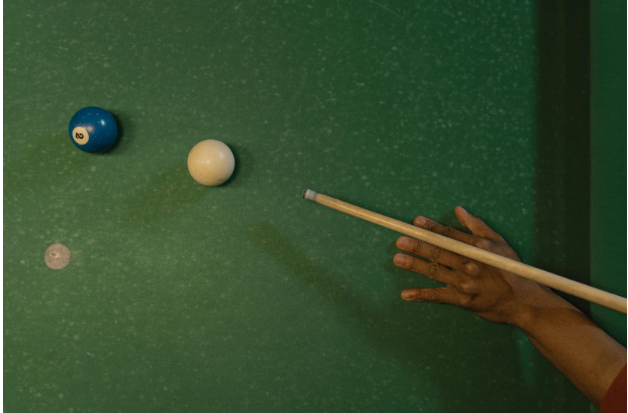Introduction
Pool is a classic cue sport enjoyed by millions around the world. Whether you’re a casual player or a serious competitor, understanding how to set up pool balls correctly is essential for a smooth game. Proper setup ensures fairness, accuracy, and adherence to the rules. This article provides a detailed guide on how to set up pool balls for various types of pool games, including eight-ball and nine-ball, and offers tips to enhance your playing experience.
Understanding the Pool Table and Equipment
Before diving into the setup process, it’s crucial to familiarize yourself with the basic components involved:
- Pool Table: A standard pool table measures 7, 8, or 9 feet in length. It is covered with a felt surface and surrounded by cushions (bumpers).
- Pool Balls: A set of pool balls typically includes 16 balls: one white cue ball, seven striped balls, seven solid balls, and one black eight-ball.
- Rack: The rack is a triangular frame used to arrange the balls in a specific pattern.
- Cue Stick: Used to strike the cue ball, sending it into the other balls.
Setting Up for Eight-Ball Pool
Eight-ball is one of the most popular pool games, played with 15 numbered balls and a cue ball. Here’s how to set up the balls for an eight-ball game:
1. Position the Rack
- Place the Rack on the Table: Position the triangular rack at the foot spot of the pool table. The foot spot is located at the center of the short side of the table.
- Ensure the Rack is Level: Make sure the rack is evenly positioned and flat against the table surface.
2. Arrange the Balls
- Place the Eight-Ball in the Center: The eight-ball (black ball) should be placed in the center of the rack.
- Position the Corner Balls: Place one solid-colored ball (numbered 1 through 7) and one striped ball (numbered 9 through 15) in the bottom corners of the rack.
- Fill in the Remaining Balls: Arrange the remaining balls randomly in the rack. Alternate between solid and striped balls to ensure a mixed distribution. The cue ball and the eight-ball should not be placed in the corners.
- Ensure Proper Tightness: Once all balls are placed, press down gently on the rack to ensure the balls are tightly packed together. A tight rack ensures a fair break and prevents the balls from spreading too much.
3. Remove the Rack
- Lift the Rack: Carefully lift the rack off the balls, ensuring that the balls remain in their positions.
- Check the Setup: Verify that the balls have not shifted and are properly aligned.
Setting Up for Nine-Ball Pool
The balls are set up differently than in eight-ball:
1. Position the Rack
- Place the Nine-Ball Rack on the Table: The nine-ball rack is a diamond-shaped frame and should be positioned at the foot spot of the table.
- Ensure Alignment: Align the rack with the foot spot to ensure a straight setup.
2. Arrange the Balls
- Place the Nine-Ball in the Center: The nine-ball (yellow ball) should be placed in the center of the rack.
- Position the Corner Balls: Place the one-ball (solid) at the top of the diamond (the apex) of the rack. The remaining balls should be placed in a random order, ensuring that all balls are included.
- Check for Alignment: Make sure that the balls are snugly packed together, similar to the eight-ball setup. Proper alignment ensures a fair break and a smooth game.
3. Remove the Rack
- Lift the Rack Carefully: Gently lift the rack to reveal the arranged balls, ensuring they stay in their positions.
- Inspect the Setup: Confirm that the balls have not moved and are properly aligned for play.
Tips for a Successful Pool Game Setup
- Use a Level Surface: Ensure your pool table is level to prevent irregular ball movement. An uneven table can affect the game’s fairness and accuracy.
- Check Ball Cleanliness: Clean your pool balls regularly to remove dirt and chalk residue. Dirty balls can affect playability and the accuracy of shots.
- Regularly Inspect the Rack: Use a well-maintained rack to avoid damage that could affect the ball setup. A damaged rack may not hold the balls securely.
- Practice Breaking: A good break is crucial in pool. Practice your breaking technique to ensure that the balls scatter properly and give you a fair chance to start your game.
- Follow the Rules: Familiarize yourself with the specific rules of the game you’re playing. Different pool games have unique rules regarding ball setup and play.
Troubleshooting Common Issues
- Balls Shifting: If balls shift during setup, ensure the rack is evenly pressed down before lifting. Also, check that the table is level.
- Uneven Break: If you’re experiencing an uneven break, it could be due to improper ball arrangement or a technique issue. Practice your break and adjust the ball arrangement as needed.
- Rack Sticking: If the rack sticks to the table, clean both the rack and the table’s surface. Dust and chalk can cause sticking.
Conclusion
Setting up pool balls correctly is fundamental to ensuring a fair and enjoyable game of pool. Whether you’re preparing for a game of eight-ball or nine-ball, following the steps outlined above will help you arrange the balls accurately and effectively. Remember to check the alignment, use proper equipment, and practice your techniques to enhance your overall pool playing experience. By mastering the setup process, you’ll be well on your way to enjoying a smooth and competitive game of pool.



